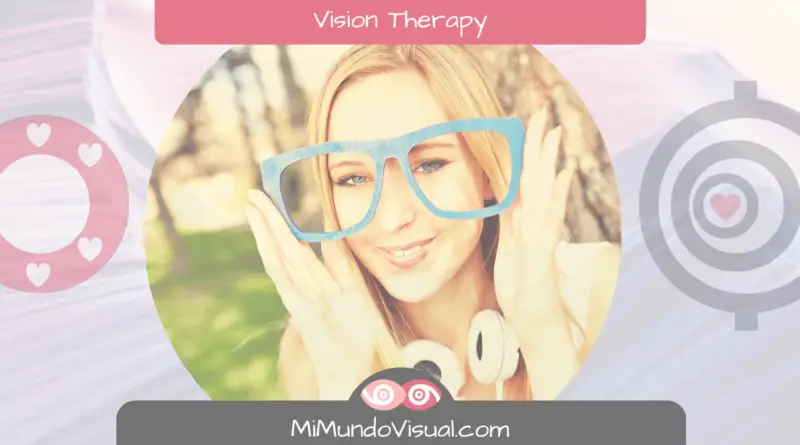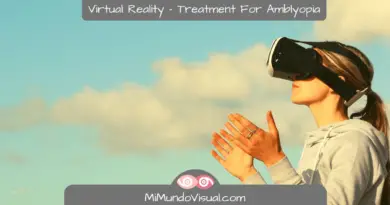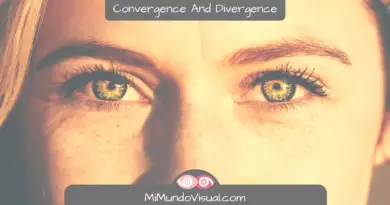Vision Therapy – What You Need To Know!
Table Of Contents
Vision therapy is one of the most controversial topics regarding visual health since we can find professionals who favor it and others, on the contrary, who are against it.
- What is vision therapy, and what does it consist of?
- What problems can vision therapy treat?
- What tools are used in vision therapy, and what are the intended results?
And finally, we will talk about the relationship between vision therapy and learning, and we will see some scientific evidence of the benefits of vision therapy.
What Is Vision Therapy?
According to the Catalan Association of Optometry and Vision Therapy (ACOTV) ‘vision therapy, vision training or rehabilitation is an optometric treatment, totally individualized, which aims to enhance and correct the problems of the visual system: focus, coordination of optical axes, lazy eye, strabismus or learning issues related to vision.’
Vision therapy treats the visual system, including the eyes and the areas of the brain involved in the vision process. And its goal is to teach the visual system to be able to correct itself by changing reflexive or automatic behaviors.
In the same way, that vision does not only mean seeing well but also refers to the ability to understand and interpret the visual information that our brain receives through our eyes.
Good vision goes beyond having good visual acuity.
Vision therapy can treat vision problems that cannot be corrected with glasses, contact lenses, or surgery alone.
There are times when, even though the eye is healthy and has 100% visual acuity and no apparent pathology, it cannot see properly because its visual system is not efficient enough or not fully developed.
This can cause a lack of coordination between both eyes, perception problems, strabismus, etc.
The development of visual skills includes:
- Learning to use both eyes together efficiently since moving.
- Fixating.
- Focusing and aligning our eyes simultaneously allows us to understand and interpret the visual information that reaches our eyes.
Vision therapy is a progressive, individualized exercise program performed under a specialist’s supervision, allowing it to be adapted to the individual’s visual needs.
It usually consists of periodic sessions of about 45-60 minutes, generally weekly, in consultation with daily sessions at home of approximately 20 minutes. However, both the sessions’ frequency and duration will depend on the individual’s situation.
Throughout the vision therapy program, evaluations assess how the person is progressing.

What Problems Can Vision Therapy Correct?
Vision therapy is a treatment that is used to correct vision problems such as:
- Amblyopia
- Strabismus
- Binocularity
- Ocular motility
- Perception
- Accommodation
- Laterality
- Directionality
- Visual-motor integration
- Mathematical thinking
- Poor visual memory
- Sports performance
- Trauma
- Problems in seeing details or distinguishing figures from the background
- Learning difficulties
Thanks to the Personalized Exercise Program that the Optometrist will carry out according to the problem to be corrected:
The aim is to develop and increase the maximum potential of visual skills and the integration of these visual skills with the other senses.
Finally, the automaticity of the visual system is achieved through the repetition of these exercises, new neurological connections will have been created, and the acquired visual skills will have been automated, which will have been integrated with the rest of the senses. In other words, we will have ‘learned to see.’
Just like Pilar Vergara discusses in her books, vision is a process that can be learned; in this case, it becomes evident that it is also possible to train and/or re-educate it.
Possible symptoms that indicate the need for vision therapy may be:
Symptoms in children | Symptoms in adults |
Slow reading Difficulty in reading comprehension Use of the finger as a guide when reading Repeating or skipping lines in reading Reversing letters or numbers Getting too close while reading Moving head too much while reading Blurred vision Squinting eyes when looking from a distance | Difficulty concentrating Eye redness and itching Blurred vision at a distance, near vision and Lifting the head from reading Fatigue and discomfort with closeby tasks Inability to sustain writing or reading Reading for more than 10 minutes Movement of letters while reading Headache |
What Are The Goals Of Vision Therapy?
According to David P. Pinero in Terapia Visual y TIC’s: diseño de programas específicos (Visual Therapy and ICT’s: design of specific programs), the objectives to be achieved with vision therapy are:
- Quality in the amplitude and later quantity of movements (speed and/or quality).
- Maximum capacity in monocular vision until both eyes are equal and, later, in binocular vision.
- Gradual increase of the level until reaching automaticity (without aids or stimuli and in daily life conditions).

Who is Vision Therapy For?
To start a vision therapy program, a complete visual examination by an optometrist specialized in this area is required. This examination will indicate whether or not we are suitable for vision therapy and/or which treatment is best suited to our particular case.
This vision exam is generally different and more complete than the routine exam performed by most ophthalmologists and optometrists. It is usually longer and includes tests for evaluating eye alignment, focusing, eye movements, visual-motor and visual-perceptual skills, and depth perception.
First, according to Pilar Bernabéu in ‘Terapia Visual en el Aprendizaje’, the Optometrist needs the patient’s prenatal, perinatal, and postnatal history to detect if there is any congenital or acquired problem during their first year, which may have influenced in some way their motor and visual development at a neurological level.
Subsequently, the Optometrist assesses the skills related to reading and learning:
- Visual Acuity
- Refractive error
- Eye Movements
- Accommodation
- Binocular vision
- Color vision
Evaluation of:
- Development of the patient’s motor system,
- As well as laterality and directionality (difficulty between right and left, confusion of letters, numbers, or directions),
- Reading and visual perception.
Visual therapy can also be effective for people of any age; however, it is essential to be aware that it is a process that requires time, effort, and perseverance. The motivation of the person is the key to success.
People starting vision therapy want to develop or improve their visual functions to eliminate or compensate for visual problems, prevent ocular pathologies, and develop visual abilities for school, work, or sports.
Vision therapy program are most frequently used for:
- Children or adults with amblyopia (lazy eye).
- Children or adults with strabismus
- Children with learning difficulties
- People who need visual rehabilitation due to brain damage.
- People who wish to improve their sports vision
- People suffering from stress-induced vision problems.
También te puede interesar…
- Círculos Excéntricos En Terapia Visual
- Tarjetas Salvavidas Para La Convergencia Y La Divergencia – Terapia Visual
- Laberintos: Ejercicios Visuales Para Trabajar En Terapia Visual
- Cordón De Brock Y La Ambliopía
- Pelota De Marsden Y La Ambliopía
- 5 Actividades Para Hacer Con El Parche Puesto
- Juegos Y Actividades Para Ojo Vago En Adultos
What Is Used In Vision Therapy?
Vision therapy utilizes:
Lenses, prisms, filters, computer-assisted visual activities, balance charts, and other non-computerized visual tools can improve the brain’s ability to control eye movements, eye alignment, focusing skills, and binocular vision.
As visual therapy tools, we can find Brock’s string, the Marsden ball, or Visionary, among many others.
Do not confuse vision therapy with eye exercises for vision improvement such as those presented in books like ‘Yoga for your eyes’ by Meir Schneider or ‘Yoga of visual correction’ by Kazuhiro Nakagawa whose reviews we share in our blog since these types of exercises do not have enough objective data in scientific research to support them or any optometrist association.
These eye exercises aim to strengthen the eye muscles.
Vision Therapy is about improving coordination and the efficient functioning and processing of the visual system.
According to Pinero, the following considerations should be taken into account when designing a visual therapy program:
- Prescription of refractive error
- Addition of lenses
- Prisms
- Vision therapy
- Combined treatments
- Visual hygiene standards
From there, the process to follow in the vision therapy program would be as follows:
First, the refractive error is compensated with additions and/or prisms. Then, we start working with monocular vision (with only one eye). To continue with binocular vision and integrate the acquired skills. Finally, we finish with maintenance.
Pinero also indicates that the vision therapy program is based on exercises:
- Oculomotor: Tracking exercises such as: Marsden ball, Groffman’s visual traces test, manual tracking, flashlight marks, rotating devices, sheets with visual traces, etc. Saccadic exercises: manual saccades, blackboard saccades, prismatic saccade training, Hart charts, ARB charts, transparent sequence fixer, Wayne saccade fixer, Ann Arbor letter tracing, and saccade sheets.
- Accommodative: Flippers with lenses, focus changes with feedback (with a target, with grid…), swinging with loose lenses, Hart charts.
- Vergential: Brock’s cord, divergence and/or convergence cards, fixed and variable anaglyphs, aperture ruler, moving mirror stereoscope, Brewster’s stereoscope, eccentric circles, jumps with loose prisms or prism bar, etc.
- Other: computer programs for visual therapy
Visual Exercises for Visual Therapy | |||
Oculomotor | Accommodative | Vergential | Others |
Follow-up exercises: Marsden ball Groffman’s visual tracing test Manual tracing Flashlight marks Rotating devices Visual tracing sheets Saccadic exercises: Manual saccades Saccades on a blackboard Prismatic saccade training Hart charts ARB charts Transparent sequence fixer Wayne’s saccade fixer Ann Arbor letter tracing Saccade sheets | Flippers with lenses Focus changes with feedback (with a target, with a grid…) Balancing with loose lenses Hart boards. | Brock’s string Divergence and/or convergence cards Fixed and variable anaglyphs. Aperture ruler, movable mirror Stereoscope Brewster’s stereoscope Eccentric circles Jumps with loose prisms or prism bars | Computer programs for vision therapy |

What Are the Intended Results of Vision Therapy?
The Vision Therapy Center describes it as such: A new visual world is achieved when the eyes manage to move, align, and focus together.
- Learning becomes easier
- The speed and level of reading increases
- Tasks are completed in less time
- Improved ability to follow moving objects
- Improved ability to see objects up close and far away
- It is easier to visualize mental images
Vision Therapy and Learning
Some ophthalmologists and optometrists have very different views on the relationship of vision therapy and learning development.
Many optometrists support using vision therapy as part of the treatment, within the multidisciplinary approach, to treat learning delays.
They point out that in many cases, children with learning delays also have vision problems since these visual problems may affect learning problems in some way.
Many ophthalmologists, for their part, consider vision therapy to be ineffective in treating any learning-related problem and claim that there is no scientific evidence to support the claim that vision correction can reduce learning disabilities.
Scientific Evidence for the Benefits of Vision Therapy
Studies show that the human brain has neuroplasticity, i.e., it is plastic, meaning that it can change its structure and function in response to external stimuli.
Previously, it was believed that these neurological changes in the brain only developed during early childhood; however, it has been demonstrated that these changes also occur in adulthood.
If you are interested in learning more about neuroplasticity. In that case, there is a book that we like very much, which deals with neuronal plasticity and was one of the first books we read on the subject; it is the book: ‘El Cerebro Cambiante’ – The changing brain by Diego Redolar.
In the book, Professor Redolar shows us how, according to recent studies, the adult brain can change despite a widespread idea in the scientific community, where it was believed that the ability to change could only develop during the development period of the nervous system.
Recent findings on neuroplasticity may confirm that vision therapy exercises if done properly, can help correct vision problems and improve the visual performance of those who practice it.
To conclude, we will do so with two Spanish studies:
- ‘Aprendizaje perceptivo en sujetos estereodeficientes con historial de ambliopía’ by Dr. in Optometry Juan Antonio Portela et al.
- And a study was conducted in different schools in the Catalan town of Rubí to test the ‘Efficacy of a vision therapy program applied at school on visual dysfunctions and reading performance in upper primary school students’ in which 148 students in 5th grade of primary school participated, where motility, accommodation, binocularity and speed and accuracy in reading were evaluated. ‘Eficacia de un programa de terapia visual aplicado en la escuela sobre las disfunciones visuales y el rendimiento lector en los alumnos de ciclo superior en primaria’
Good vision requires that sight, visual pathways, and the brain work together. When they do not, even if we have 100% visual acuity, we may have difficulty reading, writing, and processing information.
More About Amblyopia or Lazy Eye
- How Do I Know If I Have A Lazy Eye?
- What Causes Amblyopia Or Lazy Eye?
- How To Detect A Lazy Eye?
- What is Amblyopia?
- 6 Eye Patch Therapy Inconveniences We Are Not Told About
- How To Choose The Best Eye Patch For My Child?
- Contact Lenses For Children With Lazy Eye!
- 5 Questions About Lazy Eye In Adults!
- Lazy Eye In Adults – Little Everyday Difficulties That May Be Due To Amblyopia!




